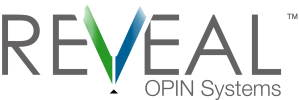
Mail and email simply aren’t the best ways to share documents with others anymore. This is especially true of software-generated documents and documents that your company receives from third parties.
Examples of reports you might be distributing include the following:
- Purchase orders
- Contracts
- Annual reports
- Invoices
- Explanations of payment (EOPs)
- Explanations of benefits (EOBs)
- Vouchers
- Earnings reports
Whether your goal is to automate large amounts of your workflow for sending out invoices or reduce the time employees spend searching for old contracts, document distribution software can help.
5 felt business needs document distribution software addresses
As you’re evaluating vendors, consider how well they satisfy your felt business needs. If a vendor focuses on security, but you don’t handle thousands of credit card numbers or loads of PHI (protected health information), someone else may be a better fit for you.
1. Security
Using software to output files eliminates a lot of the human interaction native to mail and email. This alone increases security drastically. The secure portals that document distribution tools have also make it more difficult for reports to be shared inappropriately or accidentally. For example, even if someone forwards a link to the document, it won’t be accessible unless the recipient can provide the correct sign-in credentials—which may include username, password, and connecting to an intranet.
https://twitter.com/FiPanther/status/808146423518662656
Of course, with a report management software, you’ll still need to make sure users are up to date on security best practices. Security begins and ends with your users. Software isn’t a magic solution that will solve all your security concerns, but it is certainly preferable to mail and email once you have reliable users.
2. Paper waste
Mailing documents is expensive—for every dollar you spend printing a document, you’ll spend 6 dollars on associated costs (e.g., mailing and storage). Even when you email reports, recipients often still need to print them—if only to add their signature to it.
https://twitter.com/Dr_Thunderbird/status/577625393223495680
Distribution software can restrict when and why users print documents. If your business is on the road to becoming paperless (bravo, by the way), look for software that limits or has additional hurdles before users can print a 20-page report if they only need to sign the last page.
3. Auditability
The paper trails for mail and email are subjective and often lacking. Even if the current manual process seems to be working, you need to be able to prove it to satisfy audits.
Distribution tools can create automatic documentation. Auditors will easily see who did what with each report. If you’re a B2B company, improved documentation can make audits of things like EOPs and EOBs much smoother.
https://twitter.com/HurriCap/status/751511591951163393
4. Efficiency
Mailing documents creates an automatic delay in report output. Emailed attachments, too, can be difficult to track.
Output management with report distribution tools means users can access reports as soon as they’re ready. They won’t have to wait for the UPS person to arrive or for their email client to refresh. They can just log onto the software and see what’s new. Sharing a new report with employees is easier than ever, freeing their time to focus on more important tasks.
10 steps to increase #efficiency at work, specially these weird days of holidays https://t.co/ctGiG0SZ71
— Nextinit (@Nextinit) December 19, 2016
5. Accountability
Short of asking for a document to be physically returned to you, it’s nearly impossible to hold employees accountable with how they’re handling reports. They can say they’re completing their tasks, but there’s no easy way to check without action on their part.
As software creates more documentation and improves efficiency, you’ll be better able to hold employees accountable. You’ll know when they completed their duties regarding a report, and can check that they’ve fully done so if needed—without making them email or mail the report back to you.
The power of compassionate accountability at work and home. https://t.co/g1sv8x71DH pic.twitter.com/on2dmOxWpC
— Nate Regier, PhD (@NextNate) December 18, 2016
Start your search for a great document distribution tool
Try these searches and websites
While it’s nice to have a specific vendor in mind from day 1, you might not have that luxury. Or, the first vendor that comes to mind might not be the best fit for you. Here’s a list of websites and search terms that will help you discover new vendors.
- Gartner Magic Quadrant: You’re probably familiar with Gartner’s Magic Quadrants. Although there isn’t a Magic Quadrant specifically for report distribution tools, you might want to look at the quadrants for ECM and ERP vendors. These vendors are a good starting point—many of them have a distribution tool as part of their ERP or ECM package. Plus, if they don’t have a tool themselves, they often partner with a tool they think works well with their system.
- Your ERP / ECM: Your ECM or ERP vendor may already have a distribution tool that you can purchase as an add-on. If not, they probably have suggestions or partners for you to consider.
- Google search: When you’re lost for a starting point, turn to Google. You could simply search for the best document distribution tools. Or, narrow it down a bit by searching for distribution tools plus a couple of the key business needs you want the software to address. For example, you could search “document distribution software compatible with Alfresco.” And don’t forget to try different phrases: document distribution software goes by many names—report output management, enterprise report management, content manager, data extraction, enterprise reporting, to name a few.
What to do next
As with any other software purchase, careful planning and preparation of end users is key to success. If you’d like help increasing user adoption and choosing the right software for you, contact us today!
Free checklist: How to choose the best electronic document distribution software
